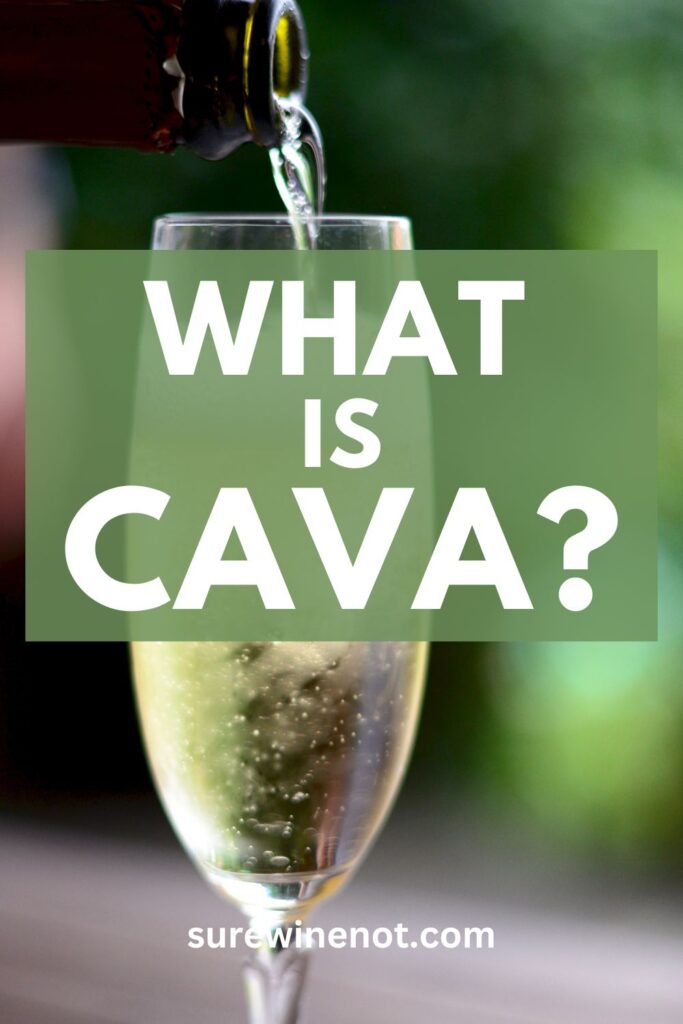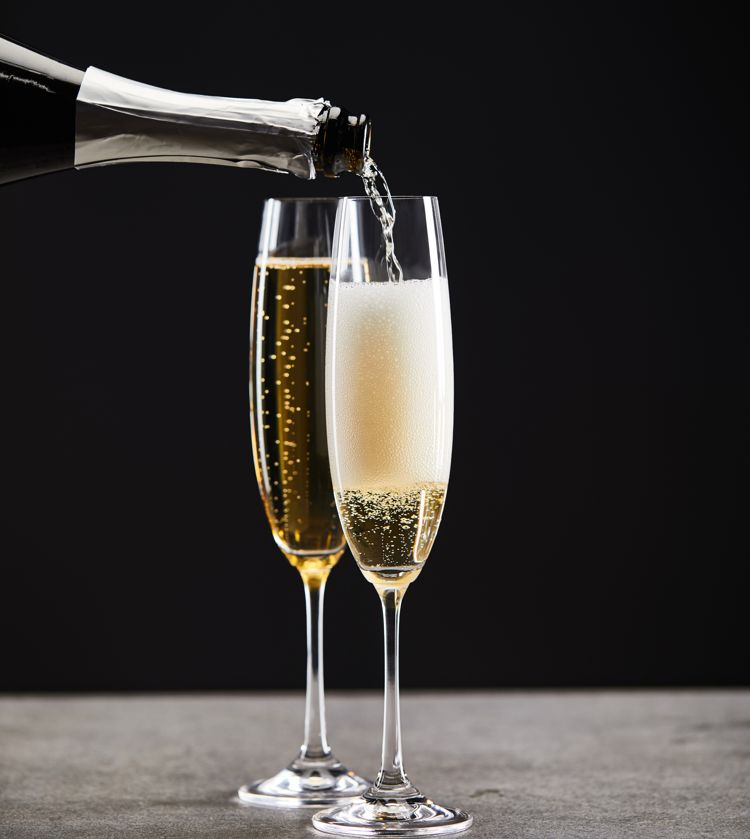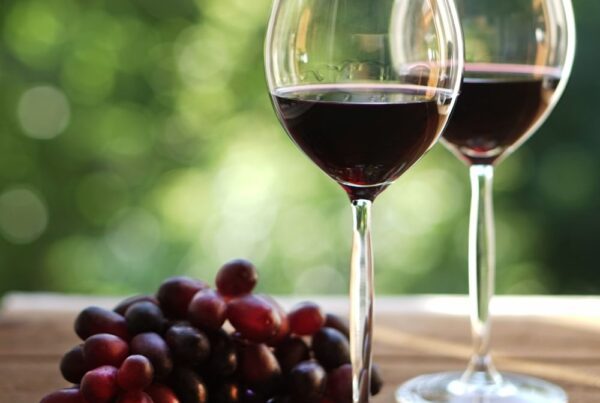In this article, you will learn what Cava wine is, what it tastes like, how it’s made and much more.
Contents
What is Cava wine?
Cava is a sparkling wine (white or rosé) from Spain.
The word ‘Cava’, which means cave or cellar, comes from the early days of Cava production when caves were used for the preservation or aging of wine.
Cava wine is made with a second fermentation in the bottle, and aged for a minimum of 9 months, with the wine in constant contact with the lees in the same bottle in which the fermentation took place.
The majority of Cava wine is made in Catalan, but it is also produced in Valencia, Navarra and Rioja.
Most Cava wine is non-vintage and ready to drink upon release.

Cava wine flavors
Cava is made in different styles, but most Cava is dry with medium acidity and some notes from yeast autolysis, e.g., bread, toast.
Cava wine has citrusy (lemon) and fruity notes, such as apple, pear and melon.
The exact flavors depends on the blend of grapes used to make the wine (different grapes add different flavors).
Like any other quality sparkling wine, Cava is produced in varying levels of sweetness, ranging from dry to sweet.
Cava wine aging categories
Cava DO updated the classifcation of Cava wine with two new categories introduced recently: Cava de Guarda and Guarda Superior.
The new classification system, ensures the origin of Cava wine can be traced more effectively.
The different categories of Cava are also now more clearly identified by age.
The aging time dictates the category as follows:
- Cava de Guarda: aged a minimum of 9 months
- Cava de Guarda Superior (Reserva): aged a minimum of 18 months
- Cava de Guarda Superior (Gran Reserva): aged a minimum of 30 months
- Cava de Paraje Calificado: aged a minimum of 36 months
Grape varieties used to make Cava wine
The Macabeo, Parellada and Xarel·lo grapes are the so-called “holy trinity” of Cava.
They are the most popular and traditional grape varieties for producing Cava.
Macabeo (Viura)
Type: Medium to large, yellow-green grapes with thin skin.
Flavors: Delicate and fruity, with apple, pear, and floral notes.
Description: Adds freshness and subtle aroma, most common in Cava.
Xarel·lo
Type: Small, thick-skinned, pale green grapes.
Flavors: Earthy and herbal, with hints of pear, citrus, and a touch of bitterness.
Description: Adds structure, body, and aging potential to Cava.
Parellada
Type: Large, greenish-yellow grapes with thin skin.
Flavors: Light and crisp, with green apple, citrus, and floral hints.
Description: Provides acidity and lightness, balancing richness from other grapes.
Other Permitted Cava varieties include:
Chardonnay
Type: Small to medium, green-skinned grape.
Flavors: Notes of citrus, apple, and sometimes stone and tropical fruits.
Description: Adds creaminess, complexity, and enhances aging potential.
Subirat Parent (Malvasia)
Type: Medium, yellow-skinned grape with thick skin.
Flavors: Aromatic with floral, honey, and tropical fruit notes.
Description: Adds aromatic richness and complexity.
Pinot Noir
Type: Small, thin-skinned, dark red grape.
Flavors: Red berries, floral, and subtle earthy tones.
Description: Adds fruitiness and color, mainly used in rosé Cava.
Garnacha (Grenache)
Type: Medium, thin-skinned, red grape.
Flavors: Red fruit flavors like strawberry and cherry.
Description: Provides fruitiness and body, primarily in rosé.
Monastrell (Mourvèdre)
Type: Medium to large, thick-skinned, dark blue grape.
Flavors: Intense red fruit and spice notes.
Description: Adds color and intensity to rosé Cava.
Trepat
Type: Medium, thin-skinned, pale red grape.
Flavors: Red berry notes with a light profile.
Description: Used mainly in rosé, offering delicate color and aroma.

How Cava wine is made
It is made using the traditional method. The traditional method is the same process used in the Champagne region of France to produce Champagne.
In Champagne, the traditional method is known as the méthode champenoise.
Champagne producers successfully lobbied the European Union to restrict the use of that term within the EU only to wines produced in Champagne.
Cava and other sparkling wines (like Crémant), therefore, cannot use the term méthode champenoise. Instead, the term traditional method (méthode traditionnelle) or the local language equivalent is used.
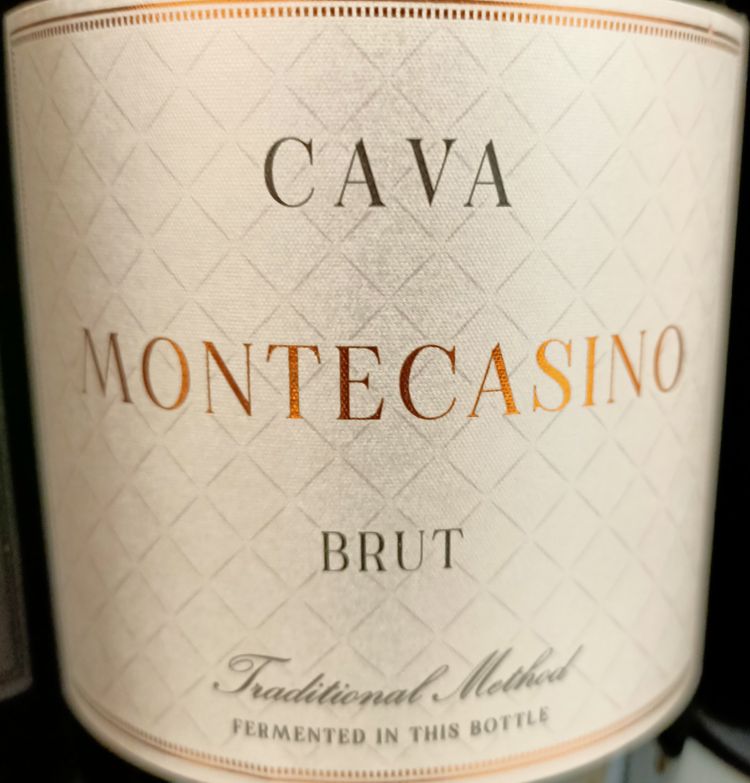
What is the traditional method?
The traditional method is both labour and cost intensive, it is only viable for high-end sparkling wines. Wines made using the traditional method are fermented twice.
First fermentation
The first fermentation begins in the same way as any wine, converting the natural sugar in the grapes into alcohol while the resultant carbon dioxide is allowed to escape.
This produces a still, dry base wine.
Second fermentation
The base wine is then blended with other wines. These can be from different vintages or varieties.
The blended wine is put in bottles along with yeast and a small amount of sugar, stopped with a crown cap or another temporary plug, and stored in a wine cellar horizontally for a second fermentation.
During second fermentation, the wine increases slightly in alcohol and the carbon dioxide, which cannot escape from the sealed bottle, becomes dissolved in the wine. This is what creates the sparkle.
During the fermentation process, the dead yeast cells form a sediment in the bottle which is called ‘lees’.
The fermentation process is followed by a period of ageing, during which the lees slowly release flavors into the wine.
This process is known as yeast autolysis (self-digestion). The yeast autolysis creates many of the unique flavors found in sparkling wines (bread, biscuit, toast etc.)
The yeast is disgorged (removed) after nine months and a varying amount of sugar added. Modern automated disgorgement is done by freezing a small amount of the liquid in the neck and removing this plug of ice containing the lees.
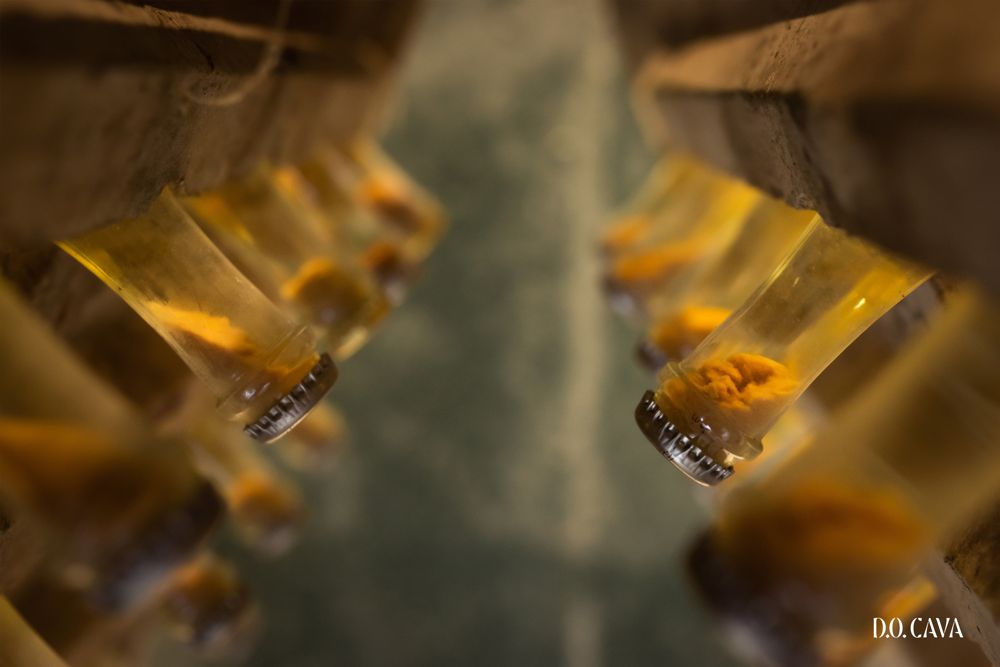
Where Cava wine is made
Almost all Cava, about 95%, is produced in the Penedès area in Catalonia, Spain.
Cava is also produced in other villages in Aragon, Castile and León, Extremadura, La Rioja, Basque Country, Navarre and Valencia.
Cava wine sweetness levels
Cava is labeled according to the amount of sweetness added to the wine at bottling, in terms of grams per liter of sugar (g/l).
Most Cava wine is dry but it comes in the following styles:
- Brut Nature: 0-3 g/l
- Extra Brut: 0-6 g/l
- Brut: 0-12 g/l
- Extra Seco (Extra Dry): 12-17 g/l
- Seco (Dry): 17-32 g/l
- Semi-Seco (Semi-Dry): 32-50 g/l
- Dulce (Sweet): 50+ g/l
Sweetness levels in sparkling wines for the EU
The EU has labelling terms to denote sweetness levels that must be used for sparkling wines, including Champagne.
Many of these labelling terms are copied or are similar around the world. They are a good indication of sweetness levels, but the labelling terminology may differ depending on where you are.
It is worth noting that there is a range within each level, so producers may be on the lower or higher end of these ranges.
The terms ‘brut’ and ‘sec’ mean dry, but as you can see from the infographic below, even sparkling wines on the higher end of the sweetness scale can contain these terms.
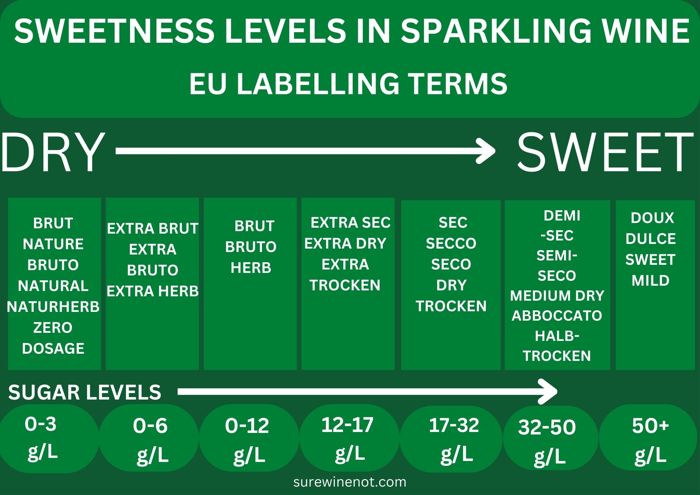
How to serve Cava
For the best Cava experience, serve it at the right temperature, in the right glass, and at the right time.
Here are some serving tips:
Temperature: Serve Cava well chilled 43-50°F (6-10°C) for the best taste.
Glassware: Use flute glasses or tulip glasses, as they help keep the bubbles longer and concentrate the aromas.
Timing: Cava is best enjoyed fresh. The vast majority of Cava is sold ready to drink.
Drink it shortly after purchasing, though vintage Cavas may have aging potential.
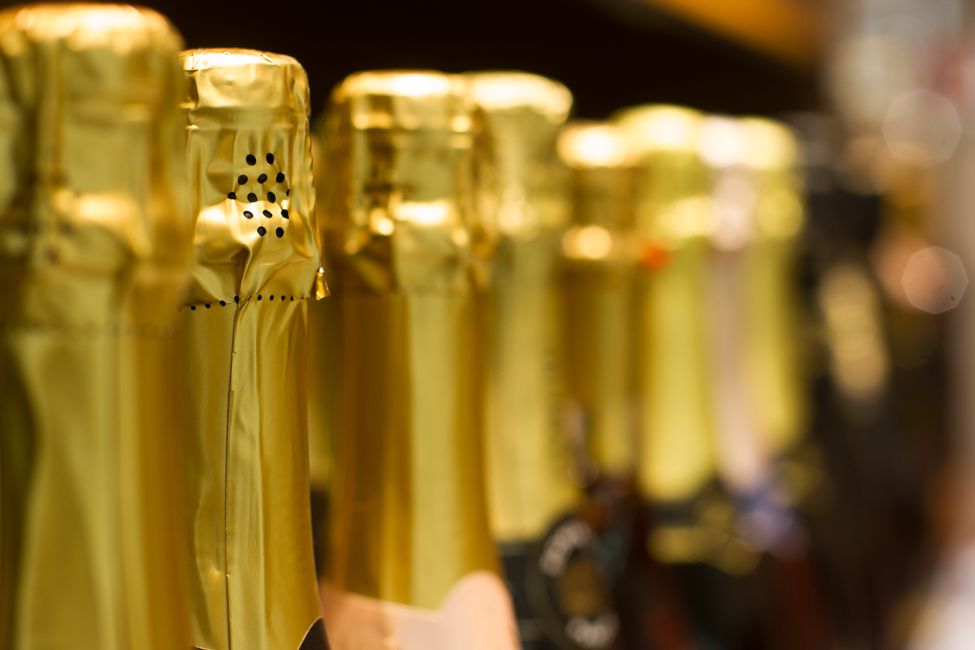
Cava vs. Champagne
Cava and Champagne are both sparkling wines made using the traditional method, but they differ in origin, grapes, and flavor.
Cava is made in Spain and mostly uses local grape varieties like Macabeo, Xarel·lo, and Parellada.
Champagne, on the other hand, comes from France and commonly uses Chardonnay, Pinot Noir, and Pinot Meunier grapes.
Cava tends to have a slightly fruitier and earthier flavor profile compared to Champagne’s more toasty and nutty notes.
Cava is generally more affordable than Champagne, making it a popular choice for casual celebrations.
Finally, Champagne is undoubtedly the most prestigious and the best quality sparkling wine in the world.
To learn more about the differences between Cava and other sparkling wines, see our article on Cava vs Champagne and Prosecco.
How to open a bottle of Cava wine
Finally, opening sparkling wines like Cava can be something of an art.
So, ensure that you know how to open Champagne and sparkling wines safely and quietly.
